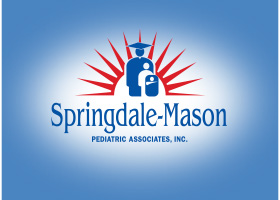Safety
Life Jackets and Life Preservers
View spanish version, share, or print this article.
If your family enjoys boating, sailing, canoeing, and kayaking on lakes, rivers, and streams, be sure your children wear the correct life jackets. If you do, they will be able to take part in these activities more safely.
Many children and adolescents think life jackets and life preservers are hot, bulky, and ugly. This is no longer true. Newer models look better, feel better, and provide increased protection.
Life preservers and life jackets are required by many states and must be present on all boats traveling on bodies of water supervised by the US Coast Guard.
Parents should choose from the following personal flotation devices (PFDs) approved by the US Coast Guard. Child PFD approvals are based on the child's weight. Check the user weight on the label.
Life Jackets
-
TYPE 1: This jacket floats the best. It is designed to turn most people who are unconscious in the water from the facedown position to an upright and slightly backward position. This jacket helps the person to stay in that position for a long time. It is to be used in open water and oceans. It is available in only 2 sizes: 1 size for adults more than 90 pounds and 1 size for children less than 90 pounds.
-
TYPE 2: This jacket can turn a person upright and slightly backward but not as much as the Type 1 jacket. It may not always help an unconscious person to float faceup. It is comfortable and comes in many sizes for children.
-
TYPE 3: This jacket is designed for conscious users in calm, inland water. It is very comfortable and comes in many styles. This life jacket is often used for water sports and should be used only when it is expected that rescue can be done quickly. The US Coast Guard has approved a puddle jumper that can be worn in place of a Type 3 life jacket in calm, shallow waters.
Life Preservers
-
TYPE 4: A life preserver is a cushion or ring and is not worn. It is designed to be used in 2 ways. It can be grasped and held until the person is rescued, or it can be thrown to someone in the water until he or she is rescued. It is not a toy and should only be used in a rescue situation. Check the label on the life preserver to be sure it meets US Coast Guard or state regulations.
Use only life jackets and life preservers that are approved by the US Coast Guard. If they are, they will have a label that says so. Life jackets and life preservers are labeled by type (1,2, 3, or 4) and for whom they are designed (child or adult).
Remember, unless your children wear or use life jackets and life preservers, they are not protected. Also, life jackets and life preservers are not substitutes for adult supervision.
Always Remember These Tips
-
Your children should wear life jackets at all times when on boats or near bodies of water.
-
Teach your child how to put on his or her own life jacket.
-
Make sure your child is comfortable wearing a life jacket and knows how to use it.
-
Make sure the life jacket is the right size for your child. The jacket should not be loose. It should always be worn as instructed with all straps fastened.
-
Blow-up water wings, toys, rafts, and air mattresses should never be used as life jackets or life preservers. They are not safe. Puddle jumpers may be safe to use; look for a label stating that it is approved by the US Coast Guard.
-
Adults should wear life jackets for their own protection and to set a good example.
Patient education handouts from TIPP—The Injury Prevention Program help pediatricians implement injury prevention counseling for parents of children newborn through 12 years of age.
The information in this publication should not be used as a substitute for the medical care and advice of your pediatrician. There may be variations in treatment that your pediatrician may recommend based on individual facts and circumstances.



